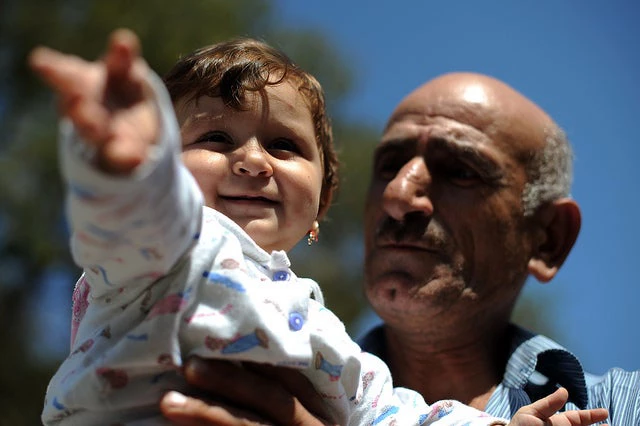
While many of us work hard to postpone growing old, ageing populations as a whole are inevitable, predictable and something countries can prepare for.
As developing countries prosper, their citizens will live longer and, hopefully, healthier lives. By 2050, the number of people in the world 65 and older will have doubled from 10% to 20%. By then 80% of the world’s elderly –nearly 1.3 billion people - will live in low-income countries .
Are these countries set up to care for these forthcoming senior citizens and ensure they have the resources to live in dignity in old age? Will countries be able to ensure fairness between the generations and resources?
Current pensions systems leave many pockets of society uncovered:
- As countries become more urbanized and families have fewer children, traditional family-based care for the elderly is breaking down, without adequate formal mechanisms to replace it.
- Traditional employment-based pensions systems don’t cover most informal sector workers in developing economies. In some regions, these workers account for two-thirds or more of the working age population. Even for those with formal sector jobs, pension coverage has been declining for people who’ve entered the workforce since 1990 in terms of years contributed over lifetime, according to World Bank Pensions Database. This has a major impact on the amount of retirement income they will eligible to receive.
In the last decade, major changes have occurred in the pension landscape, including reforms to dozens of unsustainable pay-as-you-go schemes throughout Europe and other regions, as well as the notable global expansion of “social pensions,” which are cash transfers paid to the elderly.
We know there is no universal pension policy solution that will work for every country.
Instead, we need to be nimble, and combine emerging financial technologies with insights from behavioral economics to figure out how best to extend pension coverage to the rising numbers of senior citizens and ensure they don’t fall into poverty in their old age. International experience shows us we can:
- Use new techniques, such as auto-enrollment into pension plans to increase savings for retirement. Several countries already using such techniques. For example, in New Zealand and the United Kingdom more than 6 million people have joined an occupational pension plan for the first time in the last four years. Turkey is the most recent country to adopt this approach.
- Build on financial inclusion gains to extend pension coverage . Since transaction accounts enable people to store money, send or receive payments, they can also be used to help people access other tailored financial products, such as pensions savings.
- Use innovative fintech mechanisms to scale up short and long-term savings, and entice people to set money aside for pensions. For example, India, Kenya and Mexico have set up mechanisms which rely on local community groups to gather pension contributions from informal sector workers, use mobile phones to set up pension saving accounts, and allow additional contributions to pension savings accounts to be made at ATMs and retail outlets.
- Apply behavioral economics tactics and use technology to separate funds into different accounts, then set up nudge mechanisms such as automatic contributions or reminders.
Source: Worldbank dataset, Active Coverage, 3Q2014
How and where to invest pension savings has also become a perennial question.
While countries are devising pension solutions to best cover their citizens, the international development community is increasingly looking to pension funds as a source of finance to cover long-term development, particularly infrastructure needs, and fill the gap left by stretched government and bank balance sheets.
Doing this well will require establishing proper governance and devising suitable investment instruments to strike a delicate balance between benefitting the members of the schemes and society as a whole. For example, countries such as South Africa are devising listed, infrastructure bonds to allow pension funds to participate in their renewable energy program, following the lead of Latin American countries where pension funds have a history of investing in toll roads and other projects.
The World Bank Group has provided technical assistance for pension reform operations in dozens of countries over the last two decades. Our support has ranged from parametric reforms aimed at making defined-benefit schemes more sustainable to improving the efficiency of newly instituted defined-contribution regimes.
Next week, the World Bank Group is hosting the 7th Global Pensions and Savings conference which will focus on increasing pension coverage, particularly among informal sector workers, and investing pension scheme assets for economic development.
Insights from the conference will help to inform and shape the pension reform agenda for years to come. While countries cannot postpone the inevitable tide of ageing populations, they can prepare themselves to ensure people can grow old in comfort and dignity.
Follow the conversation on Twitter at @WBG_Finance using #WBPensions16 on September 19-21.
This blog post is also available on Huffington Post.


Join the Conversation